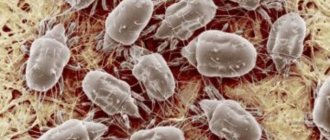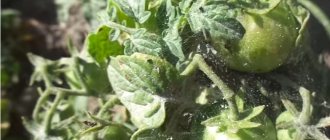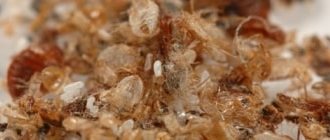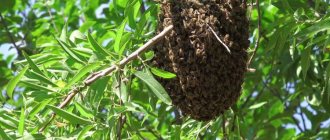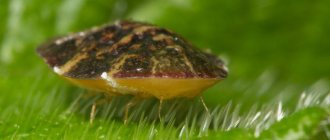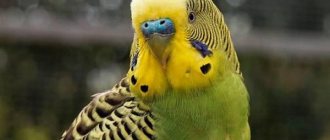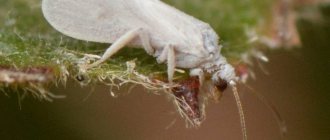Aphids (Aphidoidea) are piercing-sucking pests. Distributed in the post-Soviet space, in Central Asia, southern Europe, and the Caucasus. Very small insects that can barely be seen with the naked eye. About 3 mm long, they can be winged or wingless. During bud break on the pear, larvae emerge from the eggs overwintering on young shoots.
They form large colonies and begin to suck juices from both leaves and young shoots. The leaves curl, and the shoots slow down in growth and development. After two weeks, the larvae begin to develop into adult females. In some years, some species of aphids produce 14–15 generations. By sucking juice from leaves and shoots, they weaken the tree and reduce yield.
The fruits become unattractive in appearance. Therefore, it is necessary to systematically combat these insects. We will tell you how to do this as efficiently as possible in this article.
Causes
Colonies of this insect rarely appear in areas where it is cool and often rains. But if dry and hot weather sets in in some area, aphids immediately begin to multiply intensively. Very often, the reason for the appearance of these insects in the garden is the infection of neighboring areas. Since some species have wings and are able to fly over relatively short distances. But if there are many natural enemies of aphids in the vicinity, such as ladybugs and lacewings, then you should not be afraid of massive damage to plants. Read about the characteristics of the Meringue cucumber variety at this link.
In areas, the spread of these harmful insects is facilitated by ants that feed on the sweet substance secreted by aphids.
If ants begin to scurry intensively along the trunk of a pear tree, this is the first sign of the appearance of aphid colonies on the trees.
Signs of infection
The presence of aphids on a pear can be determined by visual inspection of the tree. Symptoms of infection are:
- The tops of young shoots “curl”, darken and dry out.
- The leaves turn yellow, curl and fall off. Sometimes purplish-red swellings appear on the leaf blades (when affected by red gall aphids).
- Flowers and buds are deformed.
- All parts of the infected tree become covered with sticky insect secretions.
- Plant growth and development slow down.
The consequences of an aphid invasion on a pear tree are very disastrous: the tree loses its decorative effect and weakens, its productivity and winter hardiness are noticeably reduced. In addition, sooty fungus and pathogens of other dangerous infections readily develop on the sweet secretions of aphids, which means that instead of just one problem, you risk getting a whole “bouquet” of troubles.
How to treat
For varieties Nika, Russian Beauty, Cathedral, as well as for other pears, trees should not be allowed to be damaged by aphids. Because it is quite difficult to get rid of it later. After all, these insects multiply very quickly and can destroy shoots and leaves. Also, the fruits of a damaged pear will not look aesthetically pleasing and will lose their presentation.
The pest can be destroyed. There are several methods for this:
- Quarantine. It is imperative to check the seedlings before planting. If they were purchased, for example, on a spontaneous market. Of course, in early spring, when the buds have not bloomed, there are no adults. But you can see shiny black eggs laid by aphids. They are very small in size, but upon inspection with a magnifying glass you can notice them.
- Agrotechnical. It consists of simple garden care operations: killing weeds, constantly loosening the soil, etc.
- Chemical. Treating the garden with various chemicals that can be bought in specialized stores.
- Biological method. The use of insects - enemies of aphids.
- People's If gardeners want to get an environmentally friendly product or aphids are just starting to spread, they use proven folk methods: infusions and decoctions from plants.
We will discuss some of these methods below.
Chemicals
In case of severe infestation with aphid eggs in early spring, before the buds open, pears are treated with an 8% carbolineum emulsion or a 1% DNOC solution.
You should know that DNOC is a very harmful substance that can negatively affect human health. Therefore, when treating the garden with this drug, it is necessary to use maximum individual protection.
When the buds begin to bloom, you can treat the pears with solutions of anabasine sulfate or nicotine sulfate with the addition of soap.
If colonies of aphids are already located in curled leaves, which means no pre-treatment has been carried out, then the trees are sprayed with metaphos, thiophos or karbofos, but no later than three weeks before harvest.
There is another scheme for processing pears:
- On bare wood, treated with Kinmiks;
- Before flowering, spray the crown with Agravertine;
- Once again with the same drug after fruit set.
If aphids have affected large areas, Fufanon can be used. When pears are treated with Actellik, aphids begin to die en masse three days after spraying and the protective effect lasts for three weeks. Using Aktara, you can be sure that it will not be washed away by rain, and will effectively resist the invasion of aphid colonies for another month.
Before use, be sure to read the instructions for the drug and use it to prepare a solution strictly according to the recommendations of the manufacturers of the chemical product, and not listening to advice in the media. It is highly advisable to add an adhesive to any solution. This could be sugar, 1% skim milk. Green or laundry soap.
Traditional methods
There are many effective folk remedies that can be used to get rid of aphid infestations. You can kill insects, for example, with a simple soap solution. You need to take from 300 to 400 grams of product per 10 liters of water. A two-day infusion of ash can destroy aphids (3 kg of product per 10 liters of water). Read about the beneficial properties of Indian onions here.
You can also use many plants that are insecticides, that is, capable of killing insects:
- Wormwood decoction. Dry the plant, put it in a container, pour in water to cover the raw material and boil for about 10 minutes. Cool and then add 10 liters of water. The effect of the decoction will be enhanced if a solution of chicken manure is added to it. Trees are treated at intervals of 7 days until aphids are completely destroyed;
- Infusion of potato tops. Chop a little more than a kilogram of fresh tops and add a ten-liter bucket of water. Let it sit for 3 hours, then strain the infusion and you can process the pears;
If you make a more concentrated solution, you can get burns to the leaf blade.
- Garlic infusion. Peel or simply chop 100 grams of garlic and add a ten-liter bucket of warm water. You need to insist for at least 2 days;
- Decoctions of tomato tops, bittersweet (quarantine plant), onion peels, hot pepper, dandelion, horse sorrel roots, and celandine are also used.
Prepared infusions and decoctions can remain toxic for about 2 months if kept in a tightly sealed container and in a cool place.
Biological methods
Biological methods of protection are used against aphids. That is, they use its natural enemies. For example, a five-spotted ladybug (sun). How to treat currants against aphids and ants, read this material.
An adult ladybug is capable of destroying about 5 thousand thousand aphids during its life.
A yellow-green insect with golden shiny eyes, the lacewing eats about 4,000 aphids during its two months of development. Black ants are protectors of aphids, but red ants, on the contrary, destroy them. They all overwinter in fallen leaves. By burning them, the gardener destroys his natural helpers. Birds are also good at eating harmful insects. In addition, biological preparations can be used in the garden.
Drugs
Biological products differ from other chemical products in that they are practically harmless to humans and animals. Pears from treated trees can be eaten on the second or third day. True, there is also a small drawback: the period of influence on the pest’s body is from 10 to 15 days, and given the speed at which aphids reproduce, treatment with such a drug may not give the expected effect.
The most commonly used bioinsecticides include such agents as bitoxybacillin, acarin, spark and others. Preparations from the Iskra group have shown themselves to be effective in the fight against garden pests:
- Iskra M – aqueous emulsion of karbofos;
- Spark Double Effect. Contains alkaloids of plant origin, which have a detrimental effect on sucking insects, aphids, Colorado potato beetles and whiteflies;
- Spark Golden. The drug is made from tobacco extract. It is highly effective even in sultry heat.
When using biological products, personal protective equipment should not be neglected.
What to plant under a pear tree
Under Conference, Chinese and other varieties, you can plant plants that attract ladybugs: nettles, daisies, garden chamomile, decorative poppy, lemon balm and other plants. Or you can sow those that aphids cannot tolerate: basil, tobacco, horseradish, onions, garlic, sorrel, parsley.
It is better not to plant elderberries nearby. Recently, aphids “do not hesitate” to settle on the leaves of this shrub.
If you plant flowers such as marigolds, chamomile, buttercups, calendula, and larkspur (delphinium) near a pear, the aphids will not settle on the tree. In addition, the smell of some vegetable crops, such as potatoes and tomatoes, will also scare her away. But you shouldn’t plant them under a pear tree and expect a harvest. Read about methods of protecting cherries from birds in this article.
Varieties resistant to aphids
One of the most obvious ways to prevent pear damage from aphids is to cultivate varieties that are resistant to damage by this pest. These include Severyanka, In Memory of Yakovlev, Kudesnitsa and Augustow Dew.
Healthy trees produce abundant fruit
Using the described methods of protection against aphids will allow you to get a high yield of pears. The main thing is not to rely on only one of the methods, but to combine them and regularly apply preventive measures.
Prevention
Preventive measures against aphids should be carried out throughout the year, seasonally:
- Autumn. Remove weeds and leaves under trees and do not burn them, but place them in a compost pit. Cut out root shoots on which eggs can overwinter;
- Winter. View the composition of plantings and remove viburnum, chrysanthemum, and nasturtium from the garden. Colonies of aphids love to settle on these plants. Before frost, it is necessary to dig out anthills;
- Spring. Whitewashing of trunks with quicklime with the addition of copper sulfate. Install trapping belts on trees. Treat the “bare wood” with nicotine sulfate or another more modern drug. When feeding plants, the nitrogen rate should be reduced. The application of ammonium nitrate leads to the growth of young vegetative mass, and young shoots will serve as tasty food for aphids;
- Summer. Apply sprinkling. Water washes away aphids, their eggs, and honeydew, which attracts ants. Loosening and cleaning of weeds in the tree trunk circle.
If in the summer on the lower shoots of the pear you find leaves rolled into tubes or as if crumpled, you need to cut off the affected areas with pruning shears.
Description of the parasite
Aphids are fairly small insects, the size of which usually does not exceed 2-3 mm. Only representatives of certain species reach a length of 5-7 mm. Being phytophages, aphids have a special proboscis (stylet) with which they pierce leaf plates and shoots. The color of the pear-shaped body of an aphid, depending on the species, can be black, light green, yellowish or pink . Each species has both wingless and winged forms. The former are responsible for mass reproduction, the latter ensure the spread and change of host plant.
Throughout the summer, aphids actively feed and reproduce, producing only wingless females. In the second half of summer, winged females begin to be born, and closer to autumn, winged males also appear. Females lay eggs, which overwinter between the scales of the trunk bark or skeletal branches, and with the arrival of spring warmth, the life cycle of the parasite resumes. Aphids are unusually prolific: during the season, one female reproduces up to 3 generations with a total number of several hundred thousand individuals.
conclusions
Aphids are a pest of garden crops. It especially often settles on pears, causing damage to the trees - the shoots do not ripen, and the fruits have an unattractive presentation. If you do not fight the pest, trees, especially young ones, may die, unable to withstand the winter. Therefore, the gardener should not allow this insect to spread on his site. Fight him using the following methods:
- Chemicals. Used when there is a large spread of aphids on the site.
- Trees are treated with metaphos, karbofos, kinmiks, agravertine and other preparations.
- Traditional medicines. Not as effective as chemical agents, but practically harmless to humans. These can be decoctions and infusions of garlic, onion peels, potato tops, tomato and others.
- Biological. Their enemies are used against aphids. For example, ladybug, lacewing. Or biological products based on plant extracts and other components that are harmless to humans. This group includes: bitoxybacillin, spark and others.
But preventative measures can prevent damage to pears by aphids: clearing weeds and loosening the tree trunk, destroying anthills, removing shoots, installing hunting belts. Find out about the features of planting a Tomato tree here.
What types of aphids parasitize pears?
Aphids are insects with a small translucent body. It reaches 5 millimeters in length. Parasites have different colors - black, red, gray, pink. All of them are characterized by rapid reproduction. In a short time, pests attack the branches, leaves and fruits of the tree.
The pear can be damaged by different types of insects. Gall aphids attack foliage and young shoots. It leads to disruption of leaf development, which causes them to curl and fall.
There are types of parasites that only affect pears. This category includes brown and green varieties. Their distribution on the tree is indicated by deformation of the leaves. Galls are formed inside the plates, in which aphids settle. As a result, the foliage turns yellow or red.
Using a catch belt
The hunting belt is a simple homemade structure that is attached to the trunk of fruit trees. The principle of its action is to create an insurmountable obstacle to insect pests. You can use fabric, straw, plastic, rubber or adhesive tape as the basis for the belt. The latter option is considered the most effective, as it allows not only to protect the tree, but also to exterminate many pests.
Installation method:
- A strip about 30 cm wide is formed from the selected material.
- It is wrapped around a tree trunk at a height of 50 cm from the ground.
- The belt is securely fastened so that it does not accidentally fall under the influence of wind or rain.
Environmentally friendly preparations that do not harm the fruits
The following drugs are widely popular:
- Aktofit,
- Actarophyte,
- Aktoverm,
- Fitoverm,
- Verticillin - M,
- Bitoxibacillin – BTU – M,
- Gaupsin.
These substances must be used strictly according to the instructions.
Cherry aphids are small black insects, 1–2 mm long. Their eggs overwinter under the bark of cherries, and in the spring they hatch into small bugs that attack young parts of the tree.
Adult pests overwinter in the grass under the trees, and when it gets warmer and the cherries begin to grow, they rise to the juiciest young shoots.
They suck juices from young leaves and green shoots of the current year, which disrupts photosynthesis and metabolism. The leaves curl into a tight round bundle, the shoot stops growing, and the aphids move to the fresh green parts of the tree.
Aphids never live alone - there are always ants next to them. Ants feed on the sweet, sticky secretion produced by aphids. In addition, ants carry aphids to other plants.
The fight against these pests is carried out comprehensively: they are treated against aphids and anthills are destroyed.
Methods of pest control in the garden
Aphids are a pest that can be destroyed quite easily if you approach this process comprehensively. By using insecticides, you can save the crop and garden plantings as a whole thanks to two or three treatments with an interval of one to one and a half weeks.
In general, there are four main methods of combating the invasion of these insects:
- quarantine – provides for a thorough examination of planting materials imported into the country for the presence of a pest. If aphids are detected on plants, import is prohibited to prevent their spread;
- agrotechnical – includes loosening and mulching the soil under trees, removing root shoots where pest eggs can be stored and survive the winter;
- chemical - involves timely spraying of the crowns of pear trees and the soil underneath them with organophosphorus compounds, neonicotinoids, pyrethroids;
- biological - includes systematic spraying using pesticides of biological origin.
One of the methods to counteract aphids is to organize proper balanced feeding of trees. The universal scheme for fertilizing a pear orchard looks like this:
- in spring - salts containing nitrogen, which are applied after the snow melts, as well as organic fertilizers - after flowering;
- in summer - fertilizers containing nitrogen, microelements that increase resistance to diseases and parasites;
- in autumn - organic, potassium-phosphorus fertilizers, ash.
Tip #1. It is necessary to avoid both underfeeding and overfeeding the garden, since aphids are attracted to trees weakened by lack and excess of fertilizers.
Gray rot is a disease of pear tree fruits.
The causative agent of the pear tree disease is the fungus Botrytis cinerea Pers. A disease of pear fruits, gray rot, manifests itself in the form of large brown spots without a border on the leaves, and in years with cold and rainy summers - on fruits that turn brown and dry out. When there is an abundance of precipitation on necrotic tissues, abundant smoky-gray sporulation of the fungus develops. Over time, the mycelium dries out and multiple small rounded fruiting bodies are formed in it - black sclerotia. In dry weather, spots on the leaves crack and fall out, and the fruits turn brown and dry out. The infection persists through fruiting bodies on fallen leaves and fruits and mycelium in the bark of shoots.
Control measures. Using healthy planting material, complying with all agrotechnical requirements for growing crops, collecting and destroying plant residues, thinning thickened plantings, spraying trees with the preparation skor or rayok.
Winter moth
These pear pests are as dangerous as hawthorn. The moth can destroy crops and even plants. This is a large butterfly with a wingspan of about 3 cm. Only males have wings; females cannot fly. The moths are greenish-gray in color. They eat everything: buds, shoots, leaves and flowers. Plus they spread to neighboring trees and plants.
The fight against moth will be the same as against hawthorn. Pest prevention helps reduce infestation rates and prevent spread. To do this, remove old bark, disinfect cracks, remove moss and lichens, and lubricate them with varnish. Regularly lime the trunks and dig up the soil around the tree. No less effective are trapping belts that prevent insects from entering the crown.
Insecticides help against winter moth:
- Zolon,
- Nexin,
- Chlorophos,
- Oleocuprite,
- Metathion.
For spraying
Trees are treated against pests several times during the spring-summer season. For this purpose, different spraying methods are used, including the following:
- A solution of soap and kerosene. Add 2 tbsp to 10 liters of water. l. carbolic acid, 100 ml of kerosene and 0.4 kg of black soap (charcoal based). This mixture is used to water anthills and spray fruit crops.
- Soda solution. This remedy is equally effective against both ants and aphids. In a liter of water you need to dilute 30 g of linseed oil and 5 g of soda. Plants are sprayed several times over a short period of time, and then if necessary.
- Coca-Cola for spraying. The sweet drink is diluted with water 5:1, after which the mixture is used to treat fruit trees. One good spray is enough to get rid of ants.
Common gardening mistakes
Mistake #1. Carrying out autumn treatment of trees before the leaves are completely shed.
Such actions can lead to premature leaf fall, and in the worst case, to the appearance of burns on them.
Mistake #2. Process until flowering is completed.
All drugs are harmful to bees, so they can harm the pollination process.
Mistake #3. Refusal to whitewash tree trunks and remove old bark.
It is the bark that most often serves as a place for insects to overwinter and lay eggs, so refusing to treat it is a deliberate way to give the pest a “green light.”
A tree damaged and weakened by aphid attacks often causes the gardener to think that it will no longer be possible to save the plantings. But the modern arsenal of insecticides, as well as home remedies proven by the personal experience of many owners, makes it possible to rid the garden of the parasite in a relatively short period of time - on average up to four weeks. But you should be guided by the rule: it is easier to prevent a problem from arising than to constantly fight it later.
What to process?
Adding fertilizers to the soil is a very important moment for the development of the plant. It directly affects the quality and quantity of the harvest. But, you need to know exactly what fertilizers need to be applied, at what time, their quantity and, of course, the characteristics of the drug. Plants that receive the correct complex of fertilizers have an undoubted advantage over a plant that received it or did not receive it according to the rules. The only disadvantage of feeding is its excess.
If fertilizing is applied in excess, this can also have a detrimental effect on the plant.
Urea (urea)
It is good to use urea fertilizer as a mineral fertilizer. An aqueous solution of urea is applied to the soil, and a weaker solution is sprayed on the leaves.
A diluted solution will prevent possible leaf burns. For good absorption of urea, potassium sulfate or phosphorus is added as the second component. The last component accelerates the growth of young shoots.
Acidic soil will not allow the pear to fully grow and develop. Calcium deficiency in the soil reduces pear yields. Acidic soils require liming and additional application of ash as a source of phosphorus, potassium and magnesium
In spring, the application of these fertilizers is especially important.
All substances necessary for development and growth must be supplied in ratios that are optimal and well absorbed. The composition of the fertilizer is simply scattered on the space near the trunk and spilled with water.
Bordeaux mixture
Treatment with Bordeaux mixture is carried out in early spring, before buds open. It consists of a solution in a certain proportion of copper sulfate and lime. Processing with a mixture is considered one of the oldest folk methods, which is still popular and effective. The drug is a strong poison for various microorganisms. Therefore, it is able to fight many diseases, including crops such as pear.
Karbofos
It is an effective drug for controlling various pests. It is mainly used for spraying plants. It is also used in processing pears. The dosage of the drug is calculated based on the area of the treated surface. The main thing in its use is that the solution must be diluted in accordance with the instructions and applied immediately after dilution. For pears, it is recommended to spray 2 times per season at a dosage of 40 g of the drug per 10 liters of water.
Fitosporin
It is used to treat and prevent plants from various diseases. The drug is effective. The peculiarity of its use is that it absolutely cannot be diluted in tap water. Bleach can kill existing bacteria. It is recommended to dissolve it in well or rain water. After dilution, it is necessary to settle the water with the drug to effectively activate bacteria, and only then treat the trees. Treatment should not be carried out in hot weather; bacteria may lose their effectiveness in hot weather. Recommended spraying is once a month.
Folk remedies
You can get rid of aphids that have settled on a pear using time-tested folk remedies that are safe for both plants and humans:
- Soap solution. To prepare it, you need to add 1 piece of grated laundry soap into half a bucket of lukewarm water. After it is completely dissolved, tobacco infusion should be poured into the mixture. You can use green soap, which is more effective. To prepare the solution, take half a bucket of water and 100 g of product.
- Tobacco dust. It is used to dust the underside surface of leaf plates, where the pest usually lives. The same is done with wood ash.
- Herbal decoction. 250 g of dandelion shoots and flowers are mixed with 0.5 liters of water. After a day, the mixture must be put on fire and allowed to simmer for a quarter of an hour. Then add one finely chopped head of garlic into it and boil for literally another five minutes. The strained broth is combined with lukewarm water to make 5 liters, and 15 g of crushed green soap is added.
- Herbal infusions. You can take celandine, onion, wormwood or garlic green arrows, as well as the above-ground part of tomatoes and potatoes. Combine 500 g of fresh raw materials and half a bucket of water. After 24 hours, the strained product is mixed with 15–20 ml of liquid laundry soap. Treatment is carried out once every 7 days late in the evening.
Planting plants with a pungent odor
You can protect pears from aphids by planting various plants that have an unpleasant odor. It scares away insects and forces them to look for other places to live and breed.
Onion and garlic
The smell emanating from these representatives of the flora is hated by most harmful insects. Therefore, to forget about aphids, you need to plant some garlic or onions near the tree.
Parsley
These aromatic and healthy greens will help not only decorate the salad, but also prevent the appearance of aphids. It is planted in small quantities near the pear trunk. The optimal solution would be to form small beds with greenery around the perimeter of the site or between two adjacent trees.
Dill
Every orchard owner can get rid of aphid infestations with dill. This herb has a pungent odor that insects do not like. Not only the thin branches of the plant, but also the flowers have a repellent effect. The dill bed should be placed as close to the pear trunk as possible.
Fennel
Fennel is a perennial plant called dill. It is popular in Western European countries, where it is often used as food. It is rarely grown in the countries of the former Soviet Union.
Celery
This plant is valued for its original taste and pronounced aroma. The latter feature is used by summer residents to combat aphids.
Celery can protect pears and other fruit trees from June to September. In the remaining time, the plant itself needs protection from aphids.
Calendula
Calendula (marigold) is a small plant with beautiful orange or yellow flowers. Its phytoncides contain substances that suppress any type of aphid.
To protect against the pest, 3–4 plants are planted in close proximity to the tree.
During flowering, calendula attracts the attention of aphids with its aroma. Because of this, insects attack it, and not the pears growing nearby.
Mint
Menthol, which is the main component of the essential oil of this plant, has a stupefying effect on aphids. Therefore, most of the insects will remain on the mint and will not be able to reach the pears.
Mint should be planted a few meters from the tree trunk. The plant prefers sunny areas, so it is necessary that the shadow from the tree crown does not block the light.
Mint needs moist and humus-rich soil. If you do not create optimal conditions, the plant will be weak and unattractive to aphids.
Lavender
This beautiful plant has an aroma that is pleasant to people, but poisonous to aphids. If you plant several plants next to fruit trees, insects will quickly leave the garden area.
Lavender needs sunny and dry places. The best option would be to arrange a small flower bed between the trees. In this place, the plant will receive the right amount of light and will be reliably protected from rain by the crown.
Carrot
This popular vegetable crop is often the target of aphid attacks. A small bed in the garden will be enough for the pest to immediately occupy it, and not the pears growing nearby. The time gained will be enough to process the area and prevent insects from attacking the trees.
Additional tips and tricks
When processing apple trees you need to know that:
- Chemical poisoning of aphids also kills their natural enemies. If it is possible to do without this measure, you need to take advantage of it.
- Insects develop immunity to drugs, so insecticides must be changed from time to time.
- When applied on cloudy and cool days, the chances of aphid survival increase dramatically.
- Chemical insecticides are toxic to bees, so they try not to treat them when trees are flowering.
Fighting aphids in the garden is an activity that requires discipline and systematicity. It is impossible to get rid of the parasite once and for all, but it is quite possible to temporarily protect fruit and vegetable crops reliably and effectively using certain methods. If you carry out the activities according to the instructions, you will not have to wait long for a positive result.
Other methods of struggle
What else you need to know to conduct comprehensive pest control:
Healthy, strong trees are attacked much less frequently by aphids. Therefore, proper care is the best prevention. By clearing the tree trunk circle of plant debris and burning it, you simultaneously destroy aphid eggs. And whitewashing a tree prevents insects from laying eggs in cracks in the bark. Fight not only aphids, but also ants. Until you get rid of them, it will be almost impossible to remove aphids. Plant plants that aphids do not like near fruit trees - herbs, onions, garlic, tobacco, horseradish, marigolds, calendula.
And away from them are those that attract her in order to “distract attention” and create some kind of traps (poppies, cosmos, nasturtium, begonia, viburnum, linden)
Marigolds planted in a circle near the trunk repel not only aphids, but also other pests from fruit trees - insects do not like the pungent smell of their tops
Aphids have a lot of natural enemies. The “favorite” of gardeners is the ladybug, which destroys 50–100 specimens daily. She is attracted to the site by flowers and aromatic herbs. You can also attract hoverflies by planting greens (dill, parsley) and daisies in the garden, earwigs by mulching the soil in tree trunks with sawdust, and lacewings, which like ferns.
Ladybug is one of the gardener’s valuable assistants in the fight against aphids
When attracting birds to your site, be prepared for the fact that they may feed not only on the food left for them and harmful insects
Biological agents
Effective means of combating gall mites include biological preparations, one of them is Vertimek of enteric contact action. It is used against pests that could not be controlled by treating the tree with other acaricides. Vertimek is capable of destroying parasites on the lower and upper surfaces of leaves. 3 days after processing, the fruits can be collected.
In the fight against gall mites on pears, the drug Fitoverm is used; the active substance it contains does not accumulate in the fruits. They are allowed to process the plantings during fruiting. Its active action is noted at high temperatures.
When a gall mite appears on a pear, effective control measures consist of treating it with products before the buds open and after flowering. Experts warn that these parasites develop resistance to the drugs used over time, so it is necessary to alternate biological with chemical ones.
